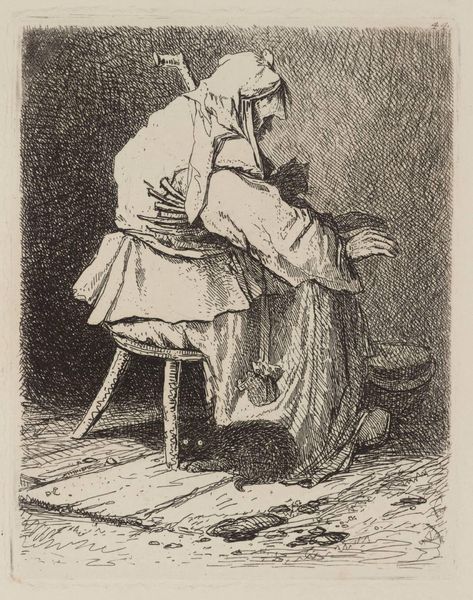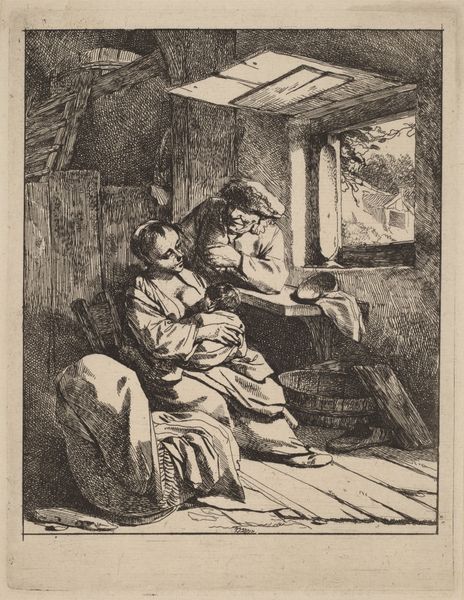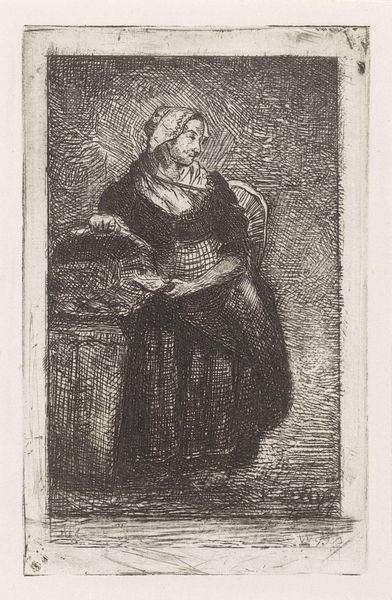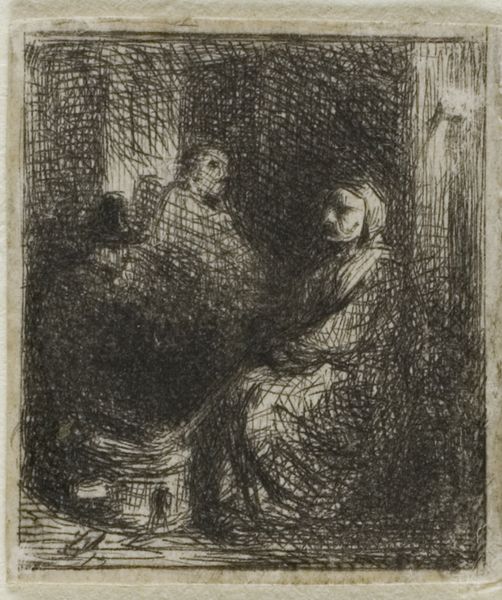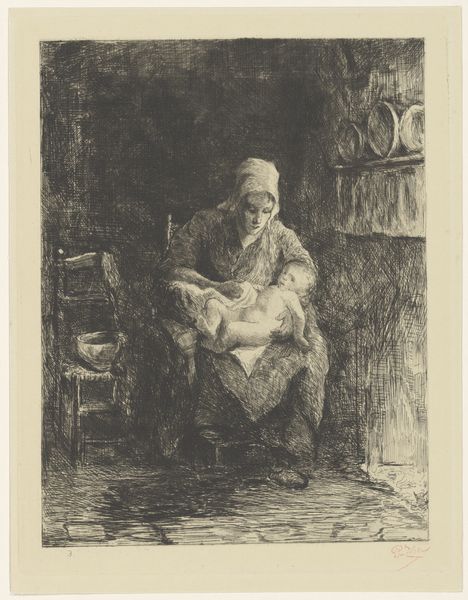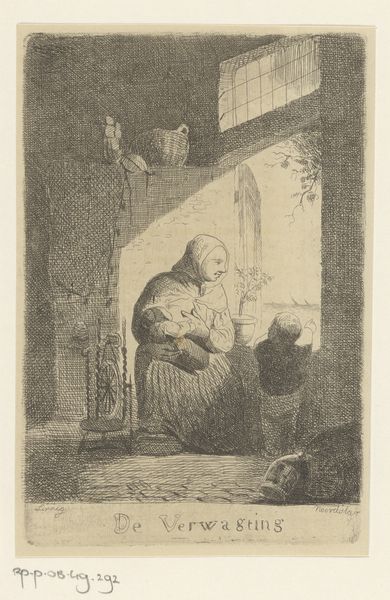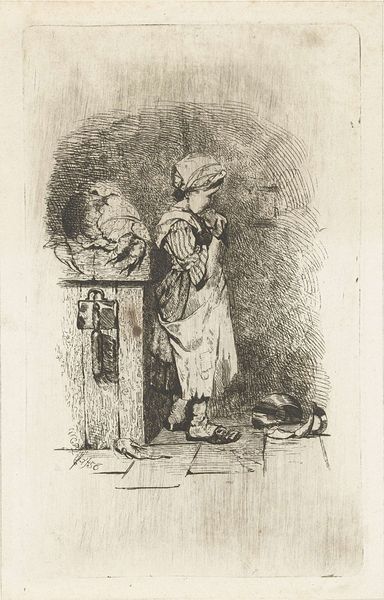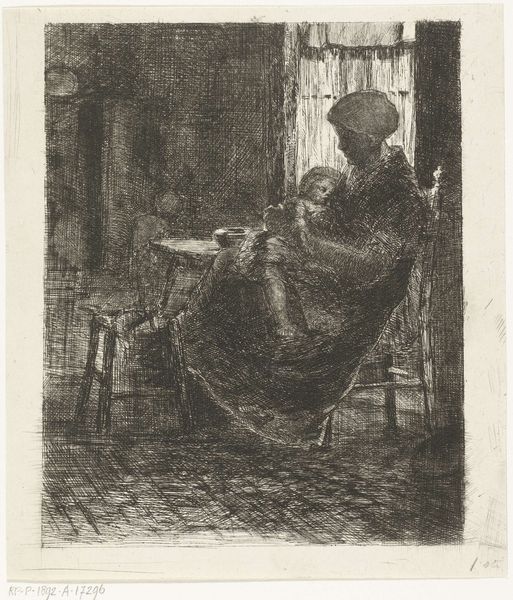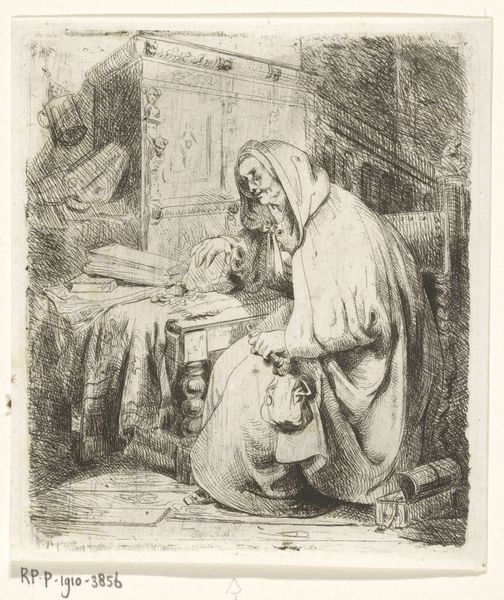
drawing, print, etching
#
portrait
#
drawing
#
16_19th-century
# print
#
etching
#
landscape
#
genre-painting
#
realism
Dimensions: plate: 4 1/8 x 2 15/16 in. (10.5 x 7.5 cm) sheet: 19 1/4 x 14 1/4 in. (48.9 x 36.2 cm)
Copyright: Public Domain
Editor: Here we have Jean-François Millet's etching "The Seamstress," created in 1853 and now residing at the Metropolitan Museum of Art. It's a strikingly intimate image. She seems entirely absorbed in her task. What draws your eye when you look at this work? Curator: It whispers of hushed domesticity, doesn't it? I'm drawn to the geometry first – the severe angles of the window panes against the slumped, rounded figure. But then, it’s her anonymity. She’s utterly present, yet we see her only as a silhouette, defined by labour. Consider the act of sewing, the countless generations bent over needles and thread – doesn't this capture the quiet dignity of ordinary toil? The window too! Is it hope filtering in, or just cold, hard light? Editor: The contrast is intense – the angular window, her hunched posture…the hard labor! You mentioned her anonymity. Is that a comment on how society viewed women's work at the time? Curator: Absolutely. Millet often chose the unsung heroes of the French countryside as his subjects, those usually ignored. This isn’t a portrait of a specific woman; it’s an archetype. A visual poem about relentless, essential, undervalued work. The crosshatching too creates this interesting sense of confinement around the woman, perhaps a reflection of her circumstances. Does that make sense? Editor: Yes, it does. I hadn't really thought about the crosshatching creating that sense of entrapment, the work itself becomes like the walls of a prison, and I missed how his portrayal elevates the dignity of common people, in their everyday work. Thank you for that insight! Curator: My pleasure. It's works like this that make us appreciate how deeply art can resonate. Even a simple scene of a seamstress can reveal a complex story about labor, society and the human condition.
Comments
No comments
Be the first to comment and join the conversation on the ultimate creative platform.

